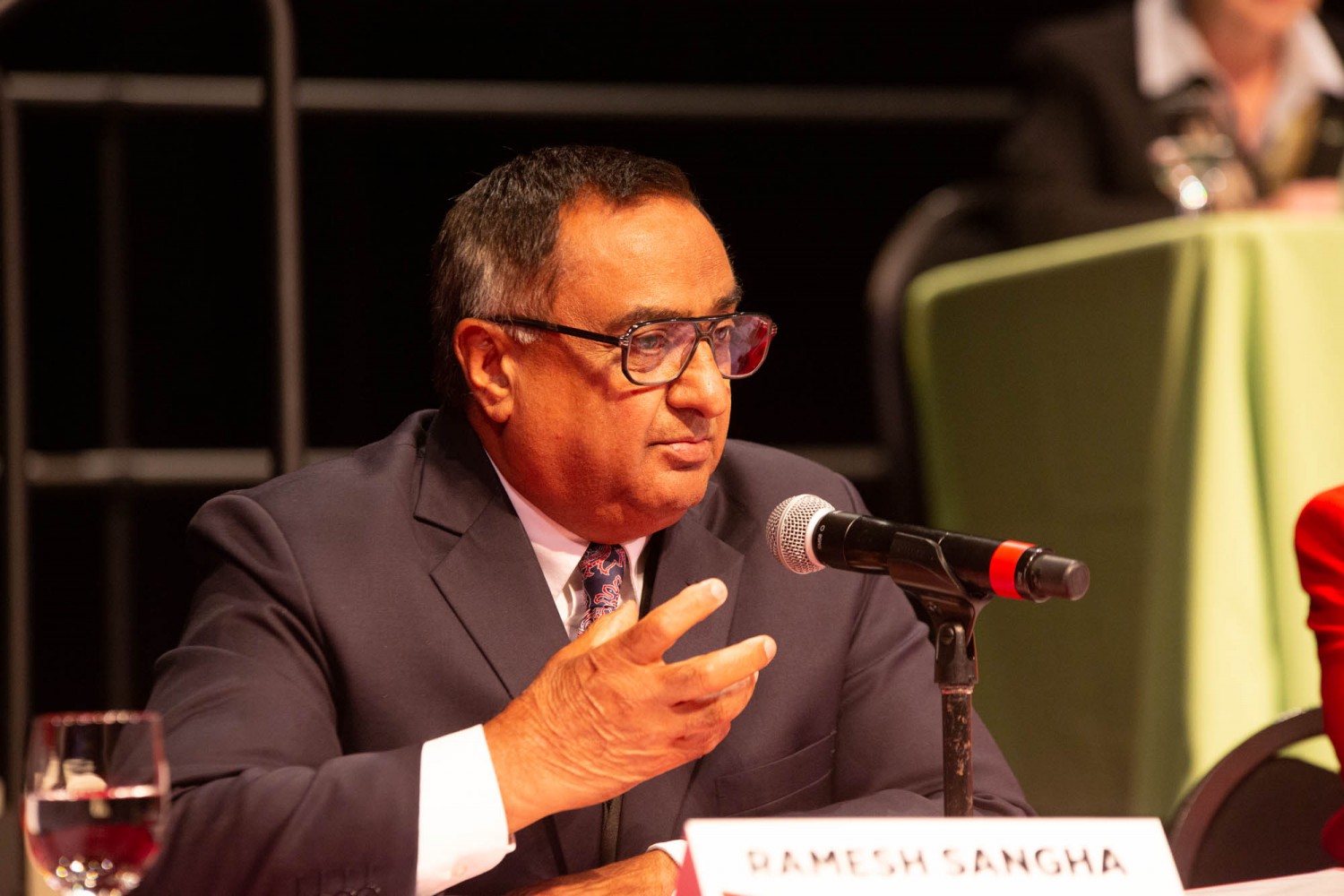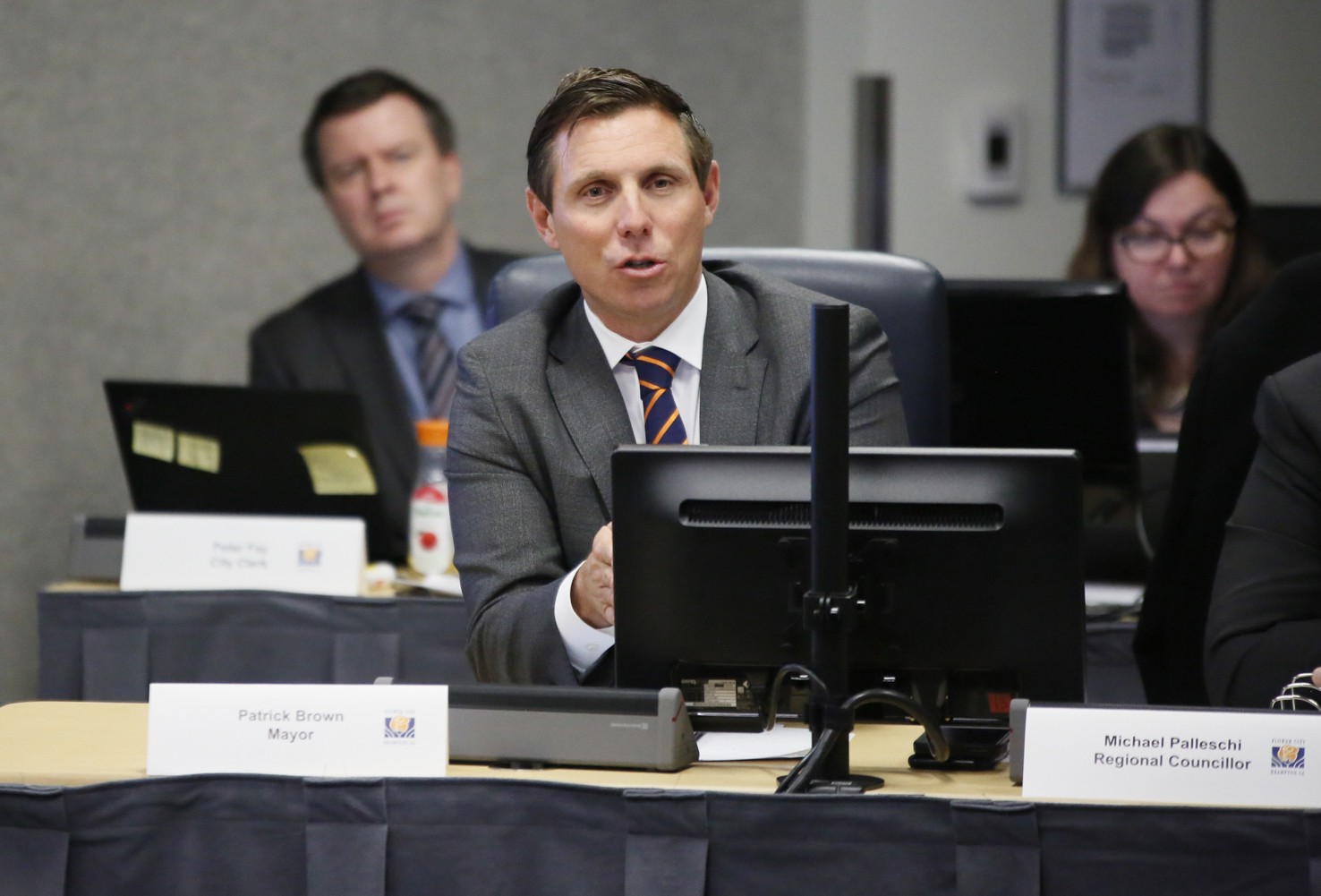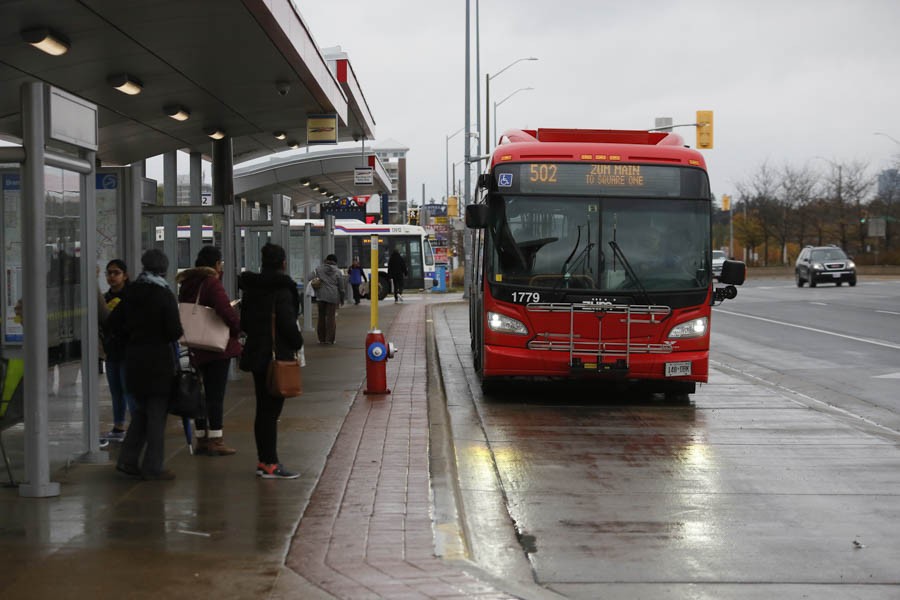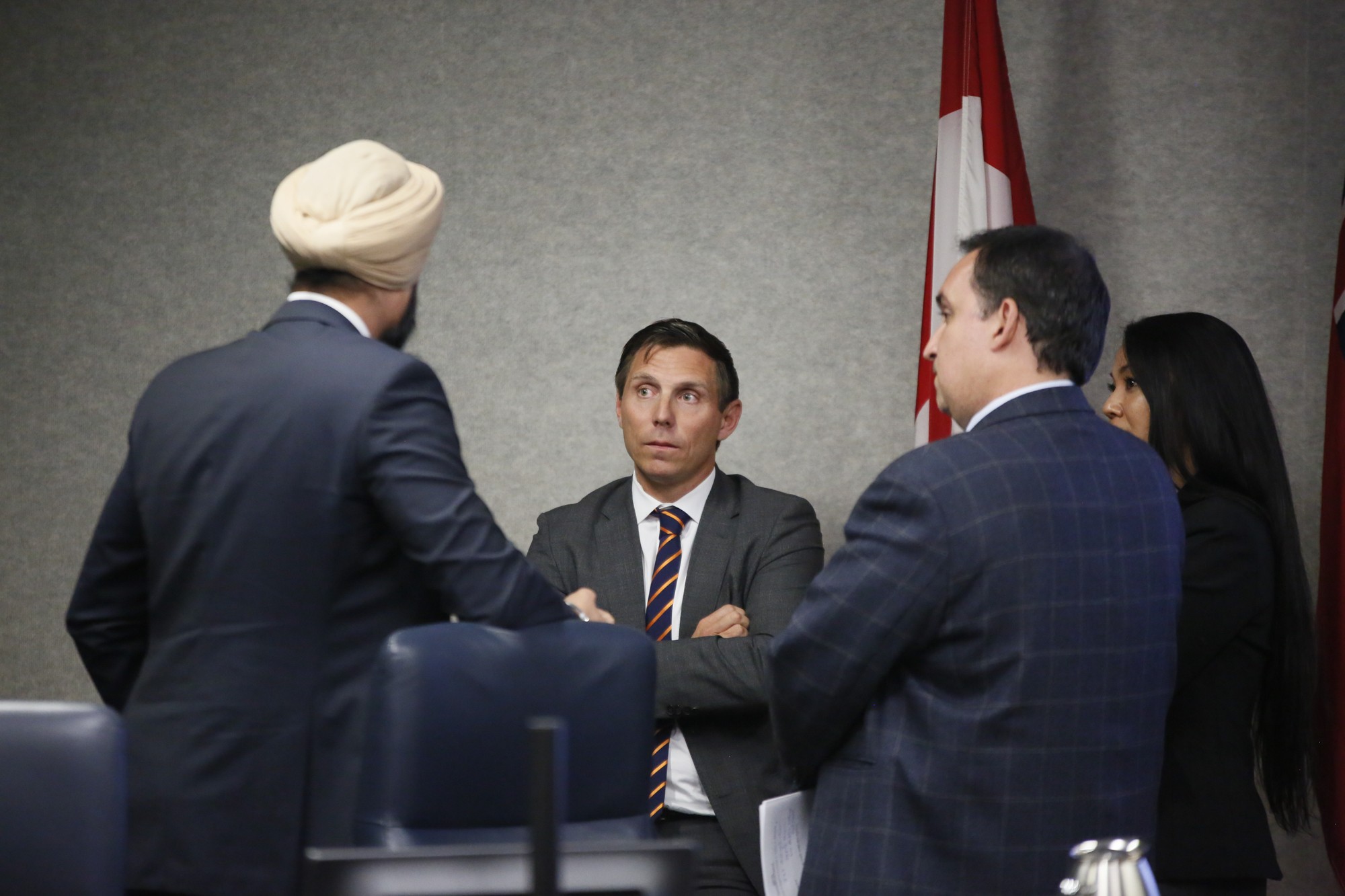
With the Hurontario LRT set to break ground, Brampton looking to cash in on election IOUs
The I’s are dotted and the T’s are crossed on the contract for the Hurontario LRT. With Mobilinx — the conglomerate that will be building, maintaining and operating the light rail line — set to begin major construction early in the new year, there couldn’t be a better time for Brampton to start a major push for its own leg of the project.
It’s no secret that the City of Brampton is looking to reverse the blunder of the previous council in turning down the provincially approved LRT route — and the hundreds of millions of dollars that came with it — that would have brought the line to the downtown GO station. The city has been studying the idea for some time. Most recently, council unanimously approved a motion in May to run the LRT along Main Street, a shift from the previous intention to study options along Kennedy and McLaughlin Road. As part of the motion, council directed staff to study other rapid-transit options along the Hurontario-Main Street corridor, north of the Brampton GO station, to Mayfield Road in the future.
The consensus is not only a sign that council is shedding past demons of dysfunction but also a much-needed step toward securing critical government funding to support the plan. Now, with the federal election over and four of Brampton’s incumbent Liberals re-elected for second terms, it’s time to take that consensus to the MPs and cash in the promises of assistance they handed out during the campaign.
Four of Brampton’s five Liberal MPs attended a debate hosted by the city inside the Rose Theatre. Under questioning, Ramesh Sangha (Brampton Centre) committed to getting funding for Brampton’s LRT.

Brampton Mayor Patrick Brown
“(They were) clamouring to commit to our big projects,” said Brampton Mayor Patrick Brown during Wednesday's city council meeting.
In fact, similar promises were made by candidates representing all of the major parties. That remains significant, as Prime Minister Justin Trudeau and his minority Liberal government will need to work with those across the aisle to get things done. This could create opportunities for Brampton to get much-needed relief for all kinds of infrastructure. One of the first orders of business for NDP Leader Jagmeet Singh during the campaign was promising Brampton a new hospital. Though he wasn’t elected prime minister, there’s still opportunities for Singh to try to keep that promise.
According to a staff report, the city is looking to set up meetings with the MPs ahead of Parliament resuming in the coming weeks. Those meetings will be an opportunity to advocate for Brampton’s needs. For transit, those needs are significant.
Aside from assistance with the expansion of the city’s transit maintenance facility and a recent $11 million for electric buses, the investment of the federal and provincial governments in Brampton’s transit has been meagre when compared to nearby municipalities.
For example, in 2010, Kitchener and Waterloo received $300 million from the province and $265 million from the federal government in support of Grand River Transit. Toronto received $660 million in 2013 for the Scarborough subway extension, and York Region was given $697 million for a subway extension in 2007.
Major transit funding for Brampton has been limited to $295 million toward Züm bus expansion in 2008. The LRT, which according to city staff could cost as much as $450 million for a surface option and as much as $1.7 billion for an underground alignment, remains completely unfunded.

And here lies the final hurdle.
Councillors have agreed to run the LRT along Main Street, but in order to complete the ask for funding, the route must be solidified — and right now they have yet to agree on whether to run it on the surface, tunnelled beneath Main Street or a combination of the two.
Mayor Brown has previously told The Pointer he’s got council’s full support for the tunnelling option, just as long as it’s the option that will get the LRT into downtown Brampton completed in the shortest amount of time.
However, dissent has bubbled up in the past.
In April, Councillor Paul Vicente introduced a motion to remove the tunnelling option Brown had championed from consideration. That led to a terse exchange in which Brown accused Vicente of presenting information about the surface option that was “factually incorrect” and misleading. Vicente had suggested tunnelling would cause delays with the Downtown Reimagined project to improve underground infrastructure and the streetscape, but Brown pointed out that staff had said the opposite. Their report pointed out that a surface option would likely delay the Downtown Reimagined project, which council eventually had to postpone so staff could determine the potential impact of underground water channels on the downtown work.
To clear the final hurdle, councillors will need information that will eventually come from the $4-million environmental assessment process, which is ongoing.
However, more information is slated to come before council next week. The future LRT is inherently linked to the transformation of downtown Brampton into a mobility hub, which will not only make it the site of major transit connections but also a link for other forms of transportation, including active transportation. According to a staff report, discussions with Metrolinx about the mobility hub have been ongoing, and an update is expected to go before council during next week’s committee of council meeting on October 30.

Mayor Brown and councillors during a tense meeting late in 2018 that saw the preferred route for the LRT moved back onto Main Street.
Whether the report provides more insight on the LRT or not, council will eventually need to form a clear vision of what it is requesting. Without that, federal and provincial funding will remain elusive.
As Brampton North MP Ruby Sahota stated during the election campaign, MPs need a complete application in order to best advocate for the money that’s needed.
“Projects come from the bottom up,” she told The Pointer.
Email: [email protected]
Twitter: @JoeljWittnebel
Submit a correction about this story


